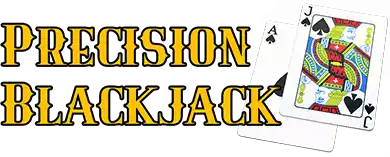The Essential Blackjack Strategy You Need to Know
The Essential Blackjack Strategy You Need to Know
The Foundation of Winning
Blackjack is often seen as one of the most accessible and beatable games in the casino. It’s a game where your decisions have a direct impact on the outcome, and with the right strategy, you can tilt the odds slightly in your favor. But here’s the catch: while anyone can learn the basic rules of blackjack, not everyone knows how to play it well. This is where blackjack strategy comes into play.
In this article, we’ll dive deep into the essential blackjack strategy that every player needs to know. Whether you’re a complete beginner or someone who’s played a few hands, mastering this strategy is crucial if you want to win more consistently. We’ll break down the basic strategy, explain why it works, and give you practical tips to implement it in your game.
Understanding Basic Blackjack Strategy
At its core, basic blackjack strategy is a set of guidelines that tells you the mathematically optimal way to play each hand you’re dealt. It’s based on probabilities and has been developed through extensive computer simulations that analyze millions of hands. The result is a strategy that minimizes the house edge and maximizes your chances of winning.
Why Basic Strategy is Important
The house edge in blackjack is relatively low—around 0.5%—if you play with perfect basic strategy. This means that for every $100 you wager, you’re expected to lose only 50 cents over the long term. However, if you deviate from basic strategy and make decisions based on gut feelings or hunches, the house edge can increase significantly, leading to more frequent losses.
By consistently following basic strategy, you can keep the house edge as low as possible and give yourself the best chance of coming out ahead.
The Basic Strategy Chart: Your Roadmap to Success
A basic strategy chart is a visual representation of the optimal decisions to make in every possible situation you might encounter in blackjack. The chart is typically organized with the player’s hand totals on one axis and the dealer’s upcard on the other. By cross-referencing your hand with the dealer’s upcard, you can quickly determine the best move to make.

How to Use the Basic Strategy Chart
Using a basic strategy chart is simple, but it does require practice to become comfortable with it. Here’s how you can start:
- Memorize or Keep the Chart Handy: If you’re new to blackjack, consider printing out a basic strategy chart and keeping it with you while you play. Some casinos allow you to refer to the chart at the table, but even if they don’t, you can study it beforehand and memorize the key decisions.
- Cross-Reference Your Hand: When you’re dealt your cards, look at your hand total and the dealer’s upcard. Find the intersection of these two values on the chart to see the recommended action—whether it’s to hit, stand, double down, or split.
- Follow the Chart: No matter what your instincts or emotions tell you, stick to the chart’s recommendations. Basic strategy is based on hard math, not feelings, and it’s designed to give you the best possible chance of winning in the long run.
Key Decisions in Basic Strategy
While the full basic strategy chart covers every possible scenario, there are a few key decisions that come up frequently and are worth memorizing:
- Hit or Stand?: If your hand totals 8 or less, always hit. If you have 17 or more, always stand. For totals between 12 and 16, hit if the dealer’s upcard is 7 or higher, and stand if the dealer’s upcard is 6 or lower.
- Double Down: Always double down when your hand totals 10 or 11 and the dealer’s upcard is lower than your hand total. This move maximizes your winnings in favorable situations.
- Splitting Pairs: Always split Aces and 8s, but never split 10s or 5s. Splitting Aces gives you two chances to hit a blackjack, while splitting 8s helps you avoid playing with a weak 16.
- Surrender: If the casino offers the option, surrender when you have a hard 16 and the dealer shows a 9, 10, or Ace. This allows you to forfeit half your bet and avoid a likely loss.

Common Mistakes to Avoid
Even with a solid understanding of basic strategy, it’s easy to make mistakes that can cost you money. Here are some common pitfalls to watch out for:
- Deviating from Strategy Based on Gut Feelings
One of the most common mistakes players make is abandoning basic strategy because they “feel” that a certain outcome is more likely. For example, you might be tempted to stand on a 12 against the dealer’s 2 because you’re afraid of busting, even though the chart tells you to hit. These deviations might work out occasionally, but over time, they increase the house edge and hurt your chances of winning.
How to Avoid It
Trust the math. Basic strategy is designed to give you the best possible chance of winning, and it’s based on probabilities, not emotions. Stick to the chart, even when it feels counterintuitive.
- Overcomplicating the Game
Another mistake is trying to incorporate advanced strategies or card counting before you’ve mastered the basics. While advanced techniques can be effective, they require a deep understanding of the game and a lot of practice. Jumping into them too soon can lead to confusion and mistakes.
How to Avoid It
Focus on mastering basic strategy before moving on to more advanced techniques. Once you’re comfortable with the basics and can play consistently without errors, you can start exploring more complex strategies if you wish.
- Ignoring the Impact of Table Rules
Different casinos and tables may have different rules, such as whether the dealer hits on a soft 17, whether surrender is allowed, or how many decks are used. These rules can affect the optimal strategy and the house edge.
How to Avoid It
Pay attention to the specific rules of the table you’re playing at and adjust your strategy accordingly. If you’re unsure about how a particular rule affects strategy, look it up or refer to a modified strategy chart that takes the rule into account.
Putting It All Together: Practice and Patience
Mastering basic strategy is the first step toward becoming a successful blackjack player, but it’s not something that happens overnight. Like any skill, it takes practice and patience to internalize the strategy and apply it consistently.
Practice Regularly
One of the best ways to practice basic strategy is to play blackjack online or with friends. Many online casinos and apps offer free blackjack games where you can practice without risking any money. Use these opportunities to get comfortable with the strategy chart and to practice making quick, accurate decisions.
Stay Disciplined
Discipline is key to winning at blackjack. Even when you’re on a losing streak or feeling frustrated, stick to the strategy and don’t let emotions dictate your decisions. Remember that blackjack is a game of probabilities, and the goal is to make the best possible decision in every situation.
Keep Learning
Finally, remember that there’s always more to learn in blackjack. As you become more comfortable with basic strategy, you can start exploring advanced techniques like card counting or betting strategies. The more you know, the better equipped you’ll be to win consistently.
Conclusion: Your Path to Blackjack Success
Basic blackjack strategy is the foundation of winning play. By mastering this strategy and avoiding common mistakes, you can significantly improve your chances of success at the tables. Whether you’re a complete beginner or someone looking to refine your skills, following basic strategy is the most reliable way to minimize the house edge and maximize your winnings.
So, take the time to study the strategy chart, practice regularly, and stay disciplined in your play. With patience and persistence, you’ll be well on your way to becoming a successful blackjack player. Good luck, and may the cards be in your favor!

